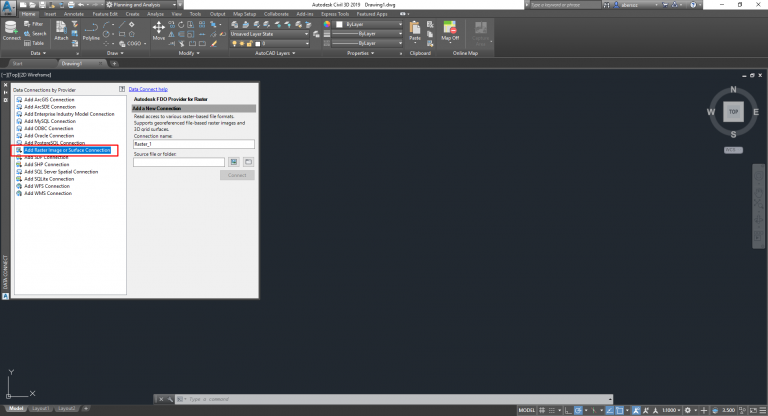

The line work created in the steps below will also maintain the data associated with it. The first portion of the import will create 2D line work which can then be used for import into a CAD or GIS program. The following conversion technique has been tried on different versions of AutoCAD, from 2008 through 2012, but my suggestion is to export and import using the same version as you would ultimately be using. This doesn’t fall within my idea of keeping everything as simple as possible.

All of this would then have to be recreated by the person’s using the GIS software. The problem with this is that all the data created by Civil 3D’s designers is then lost. One of many solutions I have read about was to explode the Civil 3D objects and then import the line work into the GIS software. The goal is to create data that can be visualized and analyzed in ArcGIS while maintaining the design information in Civil 3D and maintaining a simple and efficient workflow. The created ArcGIS file can then be imported into ArcGIS for Desktop. The process will extract the line work and data from the Civil 3D drawing (DWG file) and create a Shape file (SHP file) that is compatible with ArcGIS. This article describes the required steps to bring Civil 3D data into ArcGIS for Desktop. The bug is only in the MAPIMPORT and MAPEXPORT commands.Back April 11th, 2013 Convert Civil 3D Data to SHP FilesĪs a certified Autodesk® instructor and a manager within the civil engineering industry, I have been asked many times about using AutoCAD® Civil 3D®-created data within ESRI ArcGIS. You can ignore the new entries, since the original provider entries work fine for the SHP and SDF FDO connections. One thing to note is that when you either edit or replace the providers.xml file, you will get an additional entry in the Connect to data dialog for each of the providers you have added. You can also update any other FDO providers in this manner. You will find the providers.xml file in this folder for Civil 3D 2014. On their page, you can find a link to a replacement file for the providers.xml file.

Īutodesk is aware of this bug, and their instructions for the workaround are found here. Read/write access to Autodesk's spatial database format, a file-based personal geodatabase that supports multiple features/attributes, spatial indexing, and file-locking. Read/write access to spatial and attribute data in an ESRI SHP file.

What you need to do is add the following to the providers.xml file. When trying to import a SHP file using MAPIMPORT or exporting using MAPEXPORT in Civil 3D 2014 or Map 3D 2014, you may see this warning.Ĭlicking the OK button just sends you back to the file dialog, so you won’t get any farther than that.


 0 kommentar(er)
0 kommentar(er)
